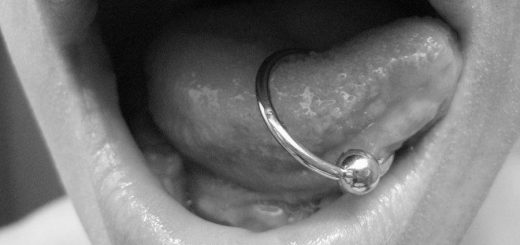How Much Does A Root Canal Cost
Are you losing confidence because some of your teeth don’t look as healthy as they always have? Maybe it’s about time for your teeth to undergo a root canal dental procedure and have them treated before they become “dead” and begin to infect your other teeth. But before you go to your dentist and have them checked, it would be better to know what is the typical root canal price so that you will be able to set a budget, which you could use for the treatment.
According to Dental Guide Australia, the total root canal cost ranges from $2,000 to $3,400 Australian dollars (approximately $1,545 to $2,630 USD), which generally depends on the assessment fee of the dental specialist (an endodontist or general dentist), the cost of the procedure as well as the fee for the core filling procedure.
*Cost Breakdown (dollar conversions are approximations only)
Assessment Fee $100 to $200 AUD ($80 to $155 USD)
Root Canal Procedure $1,700 to $2,700 AUD ($1,315 to $2,085 USD)
Core Filling Procedure $200 to $450 AUD ($155 to $350 USD)
TOTAL $2,000 to $3,400 AUD ($1,545 to $2,630 USD)
But based on the New Health Guide, the root canal cost depends on what particular tooth is given the dental treatment and whether the root canal procedure is conducted by a general dentist or an endodontist. Apparently, patients will have to pay higher prices if their molars need the treatment since they have more canals compared to other teeth. The following details are the prices according to the type of teeth:
*The root canal price for a canine or an incisor or any single-rooted tooth is around $400 to $1,000.
*For multiple rooted teeth like your molars and premolars, you can spend between $500 to $1,400 for the therapy.
Yes, root canal procedure is evidently costly. But the good news is, if you have a dental insurance plan, then it can cover the total cost of the procedure. The coverage may go up to 50 percent, depending on the terms and policies presented by the insurance provider. Furthermore, the fees usually include the insurance copayment.
In cases when you don’t have any dental insurance, you can still rely on other cost-cutting methods to reduce the expenses you need to shoulder for the treatment. One of those ways is going to dental schools instead of conventional dental clinics.
Choosing the schools would only let you pay 50 percent of the total root canal cost since students, who are still trained, are the ones conducting the operation, but of course, with the supervision of a licensed and professional dentist. Although it costs less, it is inevitable that the root canal procedure performed by a student can be a little unsafe. If you are willing to take the risk due to less financial resources, then you can avail of such service at dental schools.
Procedures of Root Canal Treatment
Now that the root canal price has already been discussed, let us get to know how a root canal is being performed.
Generally, the dental process involves six stages:
- Preparation
The first step involves taking the X-rays of tooth or teeth to find out how much the teeth have been damaged and determine what specific procedures would be the more appropriated in treating the affected tooth or teeth.
- Administration of Anesthesia
Once the dental specialist has found out the scope of the damage, he or she will administer a local anesthetic procedure so that the patient will feel less pain as the root canal operation takes place. But if the tooth is not that sensitive, then administering anesthesia may no longer be necessary. If for instance, it is difficult to administer anesthesia to the patient, then the anesthesiologist will have to perform other anesthetic techniques so that the patient will feel less pain.
- Removal of the Pulp
During this stage, the dental specialist places a dam or a rubber sheet around the damaged tooth to prevent it from getting wet and to stop the chemicals from entering the patient’s internal system while the procedure is going on. Then, he or she is going to open the tooth through the crown on top so that the inner pulp will be seen. Once everything is secured, the specialist will remove the infected pulp or the pus formed from the abscess.
- Cleaning the Root Canal and Filling it with Core
After the removal of the infected pulp, the specialist will use a file to enlarge the root canal. Apparently, this procedure takes several hours to complete. There are instances when this step is done for a number of visits and if that happens, then the dentist will place a necessary medication to remove all the bacteria in the canal. If the patient gets sick or starts to swell near the treated tooth, then antibiotics will be given to eradicate the presence of infection.
- Sealing the Tooth and Doing Necessary Fixtures around the Tooth
Then, the dentist will remove any administered medication and will place a filling in the root canal. Once this is done, the dentist will carefully close or seal the canal to prevent it from getting infected. Teeth with fillings have the tendency to break, hence, placing a crown on top of the tooth is recommended to provide more protection. Moreover, the filled teeth may be a bit darker than the rest of the teeth, but there are available chemicals to bring the original color of the teeth.
- Placing of Crowns
Crowns are part of the total root canal cost you pay, but what are crowns? As a basic reference, crowns function like caps that basically cover the natural tooth. They are either made from ceramic materials, metal, porcelain or powdered glass. With these dental items, the size of original tooth is going to be reduced so that the crown can take appropriate, completely covering the tooth. The dentist will use a crown glue to make sure that the crown securely stays in place.
Symptoms of Root Canal
If you are not a dentist, then it is better not to make assumptions that you need a root canal treatment. What is more recommended to do is to go and seek for an initial advice or opinion from a general dentist. Once you are given the green light that your teeth need a root canal, you will be instructed to go to an endodontist who will assess and determine the necessary procedures for the treatment.
But if you experience these following symptoms, then you should already go to the dentist:
– suffering from a severe toothache or tooth sensitivity
– experiencing nerve damaging, which is a discomfort every time you eat cold and hoot food
– prolonged biting discomfort
– hurting of a tooth when pressed or touched
– discoloration of tooth or teeth
– damaged tooth that affects the inner nerves












